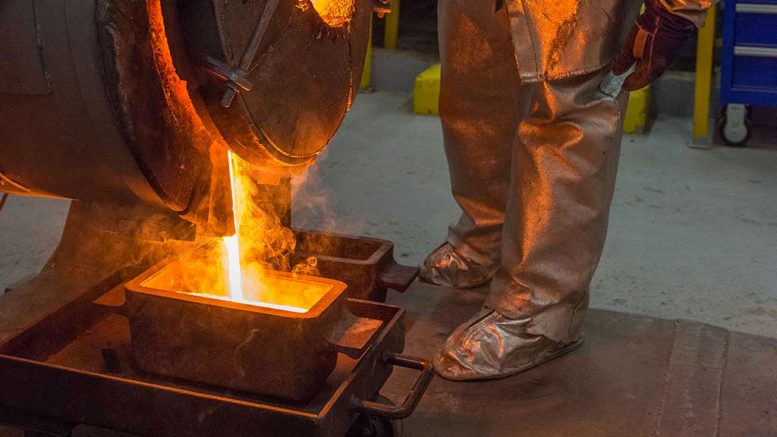The stars continue to align for precious metal prices, driven higher by unprecedented economic and political uncertainty and enormous monetary and stimulus programs.
This week leaders of the European Union agreed on a landmark 750 billion euro (US$858 billion) stimulus package to assist countries hit hardest by the coronavirus.
“It’s all creating an investment climate where investors are saying: ‘We should have gold and silver,’” Jeffrey Christian of the CPM Group in New York tells me. While gold and silver prices also rose during July and August last year before retreating in the fall, Christian says, “This is not 2019, it’s 2020 – the economic and political problems are on top of the world now, not on the distant horizon as they were last autumn.”
The silver spot price breached US$23 per oz. for the first time in about six and a half years – hitting US$23.35 per oz. on July 22, the highest price since early September 2013, according to Christian, while gold reached US$1,901.40 per oz. this week, closing in on its all-time high of US$1,920.70 per oz. achieved in September 2011.
But it’s silver that I want to focus on here because a) it typically doesn’t get as much attention as gold and b) its uses are multi-faceted and likely to grow, given its importance in solar power technology and 5G applications.
Bank of America Global Research is forecasting quarterly averages for silver of US$18 per oz. in the fourth quarter of this year and US$20 per oz. and US$22.50 per oz. in the first and second quarters of 2021, and RBC Capital Markets recently raised its price forecasts for the metal by 16% in 2020, 17% in 2021 and 14% in 2022. RBC’s analysts now predict silver will average US$17.76 per oz. this year, US$18.75 per oz. next year, and US$18.50 per oz. in 2021. RBC attributed its higher price forecasts to “a more robust rebound in global industrial production and ongoing strong investment demand.”
Silver “offers many of the same investment qualities as gold even with 50-55% of demand coming from industrial use,” which “means it is similarly attractive in the current supportive gold macro environment,” RBC said in a July 17 research note. It also pointed out that over the last three months, silver backed exchange-trade fund (ETF) holdings have risen by more than 140 million ounces.
At BMO Capital Markets, mining analysts Colin Hamilton and Alexander Pearce also weighed in on silver recently with an interesting commentary about the benefits silver enjoys from efforts to green the economy, noting that the metal’s “exposure to green stimulus is now an important tool in its armoury.”
Hamilton and Pearce pointed out that 5G and solar technology are silver-intensive and “could well benefit from any fiscal stimulus.” So far this year, they calculated, governments (75% of them in Europe) have approved more than US$50 billion of green stimulus, while in the U.S., Democratic presidential nominee Joseph Biden’s Clean Energy plan aims by 2035 to have a zero-carbon power grid that will displace thermal generation with new wind and solar capacity.
The push into solar will be “crucial” for future silver demand, the BMO analysts argued in their July 16 note to clients, explaining that the metal plays a “core role” in “the conductive layer on both sides of the silicon cell.” According to their figures, solar photovoltaics devoured about 100 million ounces of silver last year. Even with thrifting, they added, “this is set to be a growth area.”
“We model >500GW of new solar capacity being added globally by 2025,” they forecast. “This, plus use in 5G (in electromagnetic shielding), is why we now term silver an ‘infrastructure’ precious metal, as this is the key growth area and a key reason why we see silver outperforming gold as a trend over the coming years.”
In an earlier commentary in April, BMO noted that “demand from new mobile communication technology already accounts for 7.5 million oz. of silver.”
Meanwhile, ETF holdings of silver since January have shot up by about 40%.
At the same time, Covid-19 related disruptions to the silver supply are impacting the market.
BMO forecasts global silver supply will drop 6.8% this year to less than 900 million oz., the lowest in a decade. The bank points out that Mexico and Peru, both of which have been hit hard by the coronavirus pandemic, together make up about 40% of the world’s total global silver output, excluding scrap.
For its part, RBC forecasts “declining silver production from primary mines over the coming years,” and sees “fewer primary silver projects than gold projects that could be developed in the medium term in responses to higher prices.”
While higher prices “could incentivize the restart of several assets that have been idled over the past few years as a result of the weak price environment, this is unlikely to have a material impact on the overall supply picture,” RBC said.
Finally, while by-product silver production “is expected to remain relatively robust,” RBC concluded, “It should be remembered that this supply is price insensitive and is unlikely to respond to stronger silver prices.”




Be the first to comment on "Editorial: Gold and silver fire on all cylinders"